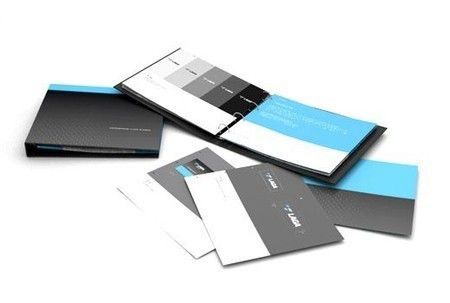Packaging Design that Sells: Attract and Convert Customers
The packaging of a product plays a crucial role in its overall success. In a competitive market, where numerous options are available, it is essential for businesses to have packaging designs that stand out and attract customers. Moreover, an effective packaging design not only captures attention but also influences customers to make a purchase. This article will explore the importance of packaging design in attracting and converting customers, and provide tips for creating packaging designs that sell.
The Power of Visual Appeal
Humans are visual beings, and an attractive packaging design can significantly impact a customer’s buying decision. The visual appeal of a package catches the eye, creates interest, and entices potential customers. When a product stands out on the shelves, it has a higher chance of being noticed and picked up.
Using HTML markup, businesses can enhance the visual appeal of their packaging design by incorporating different elements. For example, they can use images, colors, and typography in a way that represents their brand and captures the essence of the product. HTML provides the flexibility to style and structure the elements to create visually appealing packaging designs that sell.
Reflecting Brand Identity
A packaging design should not only attract attention but also reflect the brand identity. It is crucial for businesses to establish a strong and consistent brand image across all their marketing channels, including packaging. Customers often associate certain colors, fonts, and designs with specific brands, and when these elements are integrated into a product’s packaging, it creates a sense of familiarity and trust.
HTML markup allows businesses to incorporate their brand identity into the packaging design by utilizing consistent colors, fonts, and imagery. Consistency is key in reinforcing brand recognition and making the packaging instantly recognizable to potential customers.
Storytelling through Packaging
Effective packaging design goes beyond visual appeal and brand identity; it tells a story. Customers are drawn to products that evoke emotions and create a connection. Packaging can be used as a powerful storytelling tool, conveying the brand’s values, mission, and uniqueness.
HTML markup provides opportunities to incorporate storytelling elements into packaging design. For instance, by using multimedia such as videos or animations, businesses can narrate their story and engage customers on a deeper level. Furthermore, HTML markup allows for interactive packaging designs, where customers can unfold or reveal hidden elements, enhancing their overall experience.
Practicality and Functionality
While visual appeal and storytelling are essential, packaging design should also be practical and functional. Customers appreciate packaging that is convenient to use, protects the product during transportation, and provides necessary information.
HTML markup can aid in creating practical and functional packaging designs. It enables businesses to structure information effectively, ensuring that crucial details such as product specifications, usage instructions, and ingredients are presented clearly and legibly. By using HTML markup, businesses can also incorporate elements like barcodes or QR codes, facilitating easy purchasing and tracking.
Eco-Friendly Packaging
In today’s environmentally conscious world, eco-friendly packaging design has become increasingly significant. Customers are more inclined to choose products that align with their values of sustainability and minimize their environmental impact.
HTML markup can contribute to the creation of eco-friendly packaging designs through the use of recyclable symbols, graphics representing sustainable materials, and other visual cues. By incorporating these elements, businesses can communicate their commitment to the environment and attract customers who prioritize sustainable products.
The Importance of Testing and Adaptation
No packaging design can be deemed perfect without testing its effectiveness. It is vital for businesses to conduct market research, gather feedback, and analyze data to ensure that their packaging design resonates with customers and drives conversions.
HTML markup makes it possible to create interactive prototypes that can be tested with potential customers. These prototypes can simulate the packaging design on various devices and provide valuable insights into user experience. With this data, businesses can make necessary adaptations and improvements to maximize the packaging’s impact on customers.
Conclusion
In today’s competitive market, packaging design is a powerful tool for attracting and converting customers. HTML markup enables businesses to create visually appealing, brand-consistent, and functional packaging designs that sell. By leveraging the various elements and techniques offered by HTML, businesses can make their products stand out, tell compelling stories, and resonate with potential customers.
Article written by [Your Name]


